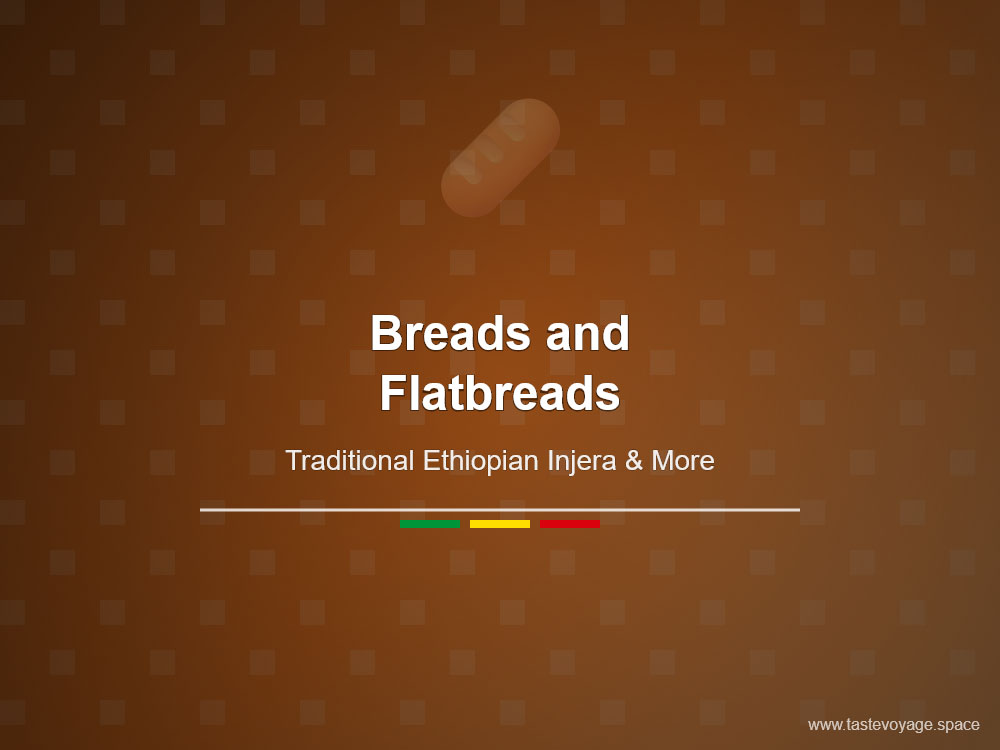Authentic Ethiopian Fermented Teff Bread Recipe You Must Try
Travel the World Through Food >> Breads and Flatbreads>>Ethiopian Cuisine>> Authentic Ethiopian Fermented Teff Bread Recipe You Must Try
Authentic Ethiopian Fermented Teff Bread Recipe You Must Try
Discovering the Rich Cultural Heritage of Ethiopian Fermented Teff Bread
Ethiopian cuisine offers a remarkable tapestry of flavors and traditions, with one dish standing out as a symbol of cultural identity: authentic fermented teff bread. Known locally as injera, this spongy, sourdough-like bread is much more than just a staple; it is a reflection of Ethiopia’s rich history, social fabric, and culinary ingenuity. Exploring the significance of injera reveals a fascinating story of tradition, community, and culinary artistry.
The Cultural Significance of Injera
Injera holds a special place in Ethiopian culture. It is typically served at almost every meal, forming the foundation of communal dining. This bread is more than nourishment; it is a symbol of hospitality and unity. Sharing injera encourages social bonds, as family and friends gather around the table to enjoy the meal together. Its round shape and soft texture facilitate sharing and symbolize wholeness and community.
Furthermore, injera’s preparation and consumption are intertwined with Ethiopian customs. Traditionally, it is baked on large clay griddles called mitads, and the fermentation process is a communal activity that often involves family members passing down techniques through generations. This shared culinary practice keeps cultural knowledge alive and fosters a sense of belonging.
The Culinary Significance of Fermented Teff
The key to injera’s unique flavor and texture lies in its fermentation process, which uses teff—a tiny, nutrient-rich grain native to Ethiopia. Teff not only provides a distinctive nutty taste but also imparts a spongy, slightly sour quality to the bread. This fermentation process enhances digestibility and enriches the bread with beneficial probiotics, making it both nourishing and healthful.
Teff’s small size and high nutritional content make it a prized ingredient. It is packed with fiber, protein, and essential minerals such as iron and calcium. Its ability to ferment naturally is harnessed to create injera’s characteristic sourness, which balances perfectly with the savory stews and vegetable dishes traditionally served alongside it.
The Artistry of Ethiopian Bread-Making
Crafting authentic injera is both an art and a tradition. The process involves carefully fermenting teff batter over several days, allowing natural yeasts and bacteria to develop complex flavors. Once fermented, the batter is poured onto hot griddles, creating a thin, wide pancake with holes on the surface—an iconic feature of authentic injera.
This bread’s texture and flavor are a testament to centuries of culinary craftsmanship. Each batch is a reflection of local climate, water quality, and traditional methods passed down through generations. The skill involved in maintaining the fermentation process ensures that each piece of injera carries the Authentic Taste and cultural essence of Ethiopia.
Celebrating the Flavors of Ethiopia
Authentic fermented teff bread is more than a dish—it is a cultural emblem. It embodies the history, community spirit, and culinary mastery of Ethiopia. Its tangy flavor pairs beautifully with a variety of traditional dishes, making it a versatile and cherished element of Ethiopian cuisine.
In exploring injera, we gain insight into a vibrant food culture rooted in tradition and shared experience. Whether enjoyed in Ethiopia or prepared with love elsewhere, this bread invites us to appreciate the artistry, heritage, and communal joy that define Ethiopian culinary traditions.
Embrace the rich history and cultural significance of this remarkable dish. Let injera inspire curiosity and admiration for Ethiopia’s vibrant food culture, and consider experiencing it in its authentic form to truly appreciate its depth and beauty.
